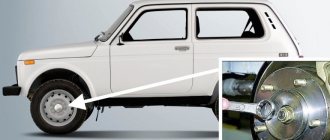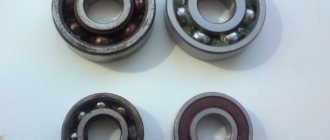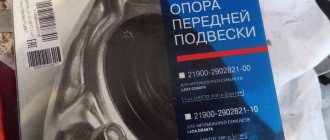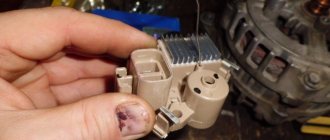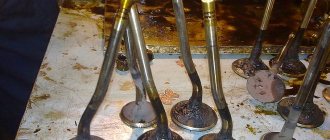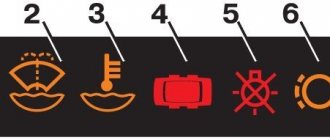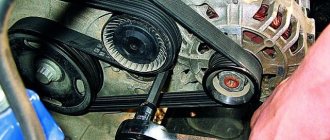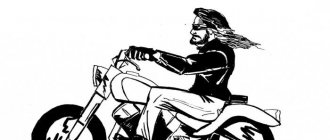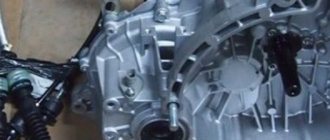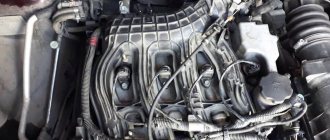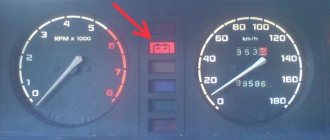The wheel bearing is one of the important elements in a car. If it is absent, the wheels simply will not rotate. This element constantly experiences high loads, so it is made only from high-quality materials. But due to the high mileage of the car, as well as due to improper operation, this part may fail earlier. Experts recommend replacing wheel bearings immediately, otherwise you can get into big trouble. So, let's look at what to do if a wheel bearing hums, what kind of device it has, and the dangers of driving with such a faulty element.
In fact, the buzz is only the first signal. Then the situation can develop quickly and rapidly. Against the background of the humming of the part, drivers begin to hear a crackling sound that comes from the area of the front wheels of the car. And at some point, when the bearing cannot withstand the speed, it shatters into pieces. It's easy to guess what will happen next. First, the wheel will jam, and at the most inopportune moment the car will become uncontrollable and skid. Next, the suspension arm support will break and the axle shaft will become deformed. Repairing the suspension will cost the car owner much more than simply replacing wheel bearings.
Wheel bearing design
So, a bearing is usually called a mechanism that performs the functions of supporting a support. It can support any axles, shafts or other parts, but in each case the bearing is designed to fix the shafts in space, allowing them to roll or rotate freely. The second function that a bearing performs is to receive mechanical loads and transfer them to other components.
The wheel bearing is a rolling bearing. Its main task is to ensure equal rotation of the wheel around its axis. These mechanisms are divided into single-row and double-row. They can be either open or closed. They are used in the construction of trucks and cars. The front and rear wheel bearings differ in design.
Design and operating principle
Wheel bearings are one of the most heavily loaded parts of a machine. They bear the pressure of the total mass of the car, multidirectional loads that arise during acceleration, braking, and driving over uneven surfaces. Therefore, very serious requirements are put forward for these units, since traffic safety directly depends on them.
In the design of a car, rolling bearings are used in the hubs. Different types of bearings are used in automobile hubs, although they are structurally identical and consist of several parts:
- clips, they are also rings (outer and inner);
- rolling bodies;
- separator;
The bearing rings act as supporting surfaces for the rolling elements, which are placed between the races. The outer ring of the bearing is installed in the hub hole, and the inner ring is seated on the axle.
To distribute the rolling elements evenly around the circumference of the races, a separator is used. The task of the separator is also to prevent contact of these bodies with each other.
Additionally, in the design of some types of wheel bearings, anthers are used to prevent dust and dirt from entering the unit. Such nodes are considered closed.
Violation of installation rules
Another reason can be identified as improper pressing. This reason is secondary. For example, during the repair process, a new bearing can be pressed in incorrectly, say, obliquely. For this reason, after just a few thousand kilometers the new wheel bearing begins to hum, and the car owner must replace it again.
Another reason that can be attributed to improper installation is over-tightening. In most cases, this happens on domestic cars. During the replacement process, the unit was overtightened, as a result of which it overheated, which did not have the best effect on the service life, and then broke. When installing, do not forget about the tightening force.
Causes of wheel bearing failure
Almost all known causes of front and rear wheel bearing failures come down to just four points.
- Incorrect wheel bearing installation. When installed, tapered bearings are clamped with a strictly defined torque. If you do not tighten the hub nut enough, the bearing will play and break when driving over uneven surfaces. If you overpress it, it will begin to heat up due to increased friction, which will cause a chain reaction: degradation of the lubricant, softening of the metal from overheating and, as a result, avalanche-like wear of the bearing itself.
Also, some inexperienced craftsmen, when installing radial bearings, hammer them into the hub with an impact tool. This is strictly prohibited, since shock loads will significantly reduce the life of even the highest quality bearing even before the first kilometer.
- Systematic driving on broken roads. Dynamic loads from driving on bad roads and frequent sharp turns at high speeds are one of the main reasons for the rapid wear of wheel bearings.
- Lack of lubrication or contamination. The wheel bearing must be generously lubricated. If there is not enough lubrication, the working surfaces of the rolling elements and races will quickly wear out. In addition, damage to the anthers, water and abrasives entering the working cavity of the hub will quickly cause the bearing to fail.
With inexpensive bearings, manufacturers often pack insufficient grease. In this case, it is advisable to purchase an additional portion of hub grease and add it in the amount required.
- Initially low quality bearing. Today, most even inexpensive bearings from little-known brands are of decent quality. However, there are still “nameless” spare parts and bad fakes that crumble literally after a few thousand kilometers.
With the right approach to car operation and the selection of spare parts, all these reasons can be eliminated, which will allow you to forget about replacing wheel bearings for a long time.
Need professional help selecting parts? Contact us by phone 8 800 555-67-06 or use the form below.
Expert help
Typical symptoms
This is the most interesting thing. In order to determine the failure of a node, there are several ways. At the very initial stage, the behavior of the bearing can be ignored; at this stage, a slight hum, buzzing, and small tapping noises can be heard. Also, one of the first symptoms is a hum when turning (at the very initial stages of a breakdown). This sound is often confused with tire noise. However, over time the sound can be compared to a jet plane. An indirect sign can be considered the complete disappearance of any noise at the moment of turning, but when the car moves in a straight line, everything returns.
The hub bearing is humming: is it safe to drive?
Some car owners with faulty bearings not only drive, but also accelerate their cars to 100 km/h or more - this is very dangerous. Do not forget that the wheel bearing is the element that is responsible for the ability to rotate the wheel.
If this unit is broken, it can jam at any moment, and this is very serious. This often results in fatal accidents. A wedge is a sudden stop of one of the front wheels if the front wheel bearing is destroyed.
At a speed of 100 km/h, in the best case scenario, the car will fly off to the side of the road, or it may be thrown into the oncoming lane. Cars also often overturn. It is worth remembering that the wheel bearing is a key component. If the wheel bearing is humming, is it safe to drive? It is possible, but not quickly, up to 40 km/h.
When to replace
When, as part of the diagnostics, you have determined that the wheel behaves in an uncharacteristic manner, you will need to replace the chassis element.
Under no circumstances should you delay replacing the wheel bearing, as this could lead to a potential loss of control while driving. In fact, there is a risk of being left without a wheel.
If you notice play during the inspection, a complete bearing replacement is not always necessary. In some cases, the problem is resolved by adjusting the axial clearance. Here you will need to use the adjusting nut and your standard set of tools. The adjusting nut must be tightened to the appropriate position. Be sure to use fresh, high quality lubricant when making adjustments. Noise, creaking and knocking indicate that it is time to change the bearing. There are simply no other options here.
Wear itself occurs mainly due to natural processes during operation. The average lifespan of a wheel bearing is 100 thousand kilometers.
But shock loads also play a big role. When we drive with you on bad roads, we constantly run into potholes and fall into holes, of which there are simply a huge number, all this affects the chassis and contributes to accelerated wear of the bearing.
We diagnose in practice
The process should occur as follows: at low speeds, approximately 50 km/h, the bearing will emit a strong hum, the intensity of which will reach a maximum at speeds from 60 to 65 km/h. Then, when you turn left, the hum will disappear, but if you turn right, it will persist. In this case, most likely the left node is faulty. Here's how to tell which wheel bearing is humming. You just need to listen.
Malfunctions in wheel bearings, as already noted, are accompanied by noise from the wheels, vibrations on the brake pedal, and various extraneous sounds in the suspension mechanisms. Front wheel bearings can make knocking noises from severe play in the bearings, and the noise can be caused by worn out raceways, rollers, and cages.
How to check a wheel bearing?
Follow the steps one by one, and then you will eliminate the possibility of making mistakes even the first time.
- The first thing to do is to lift the wheel being diagnosed so that it can rotate freely. To do this, use a jack or place the car on a platform.
- Then turn the wheel by hand, making sure it turns freely. In some cases, the noise may be caused by the wheel not fully decelerating and the brake pads rubbing against the disc or drum.
- Tilt the wheel from side to side by grasping the top and bottom edges of the wheel. Then repeat the action, changing your grip to 90 degrees.
If you find any play, you may need to check the torque of the hub nut.
It is important to have on hand the technical data sheet of the car, which indicates the tightening torque of the wheel bearing nut. The sequence of actions is as follows:
- Remove the nut cap (if equipped).
- Remove the cotter pin (if equipped).
- Get a helper and ask him to block the wheel by pressing the brake.
- Check the tightening torque using a torque wrench.
If torque is within specification and play remains, replace the bearing.
We diagnose by ear
But it also happens that there is no play, but only noise confirming the presence of malfunctions. How can you tell which wheel bearing is humming? This is not an easy task.
Due to resonance effects this is not always possible from the driver's seat. You'll have to call the assistant again and deceive him. Various options are possible:
- Walk past a permanent observer in an open space, changing modes and directions of movement. This method will be effective if the noise is clearly audible even at low speed.
- Place the assistant in another car. Let him drive along the highway with you, open the window and determine the source of extraneous noise by ear.
Both options for this type of diagnosis require certain skills.
- Having figured out which part needs to be replaced, you can begin work, the complexity of which directly depends on the design features of the vehicle. You will need to consider:
On which axle, front or rear, disc or support, the replacement is carried out.
- What type of bearing is installed on your car.
- Parts are available in several options:
- Open or closed.
- Single or double breasted.
Conical or radial.
- Ball, roller or combination ball, roller or cage blocks
- Two different designs and patterns are available:
The bearing is manufactured separately. In this case, a special puller, mandrels and a press are required to complete the work.
Diagnostics on a lift or using a jack
There is another way to determine which wheel bearing is humming. In this case, it is necessary to inspect the machine on a lift. A breakdown is detected by how smoothly and evenly the wheel rotates. They also look at the play in the vertical plane. In order to determine the malfunction, grab the lower and upper points of the wheel with your hands and rock it. Only a small amount of play is allowed on the front wheels with the MacPherson type suspension. There should be no play on the rear wheel, as well as on the front wheel, where the suspension is multi-link.
The hub bearing is humming: how long can you drive?
Newbie motorists often ask this question. It must be said that the distance depends on the quality of the roads. In some places, the road surface can easily ruin even the chassis of an SUV. Therefore, once again there is no need to take risks, human life is one.
Now you know how to determine which wheel bearing is humming. These tips should help novice motorists who have just gotten behind the wheel of a vehicle.
The hub is the main connecting link between the car body and the road through the wheel, and it is the one that experiences the greatest loads, both in motion and at rest.
At the same time, not only the driving and speed characteristics of the car, but also safety depend on the serviceability of the hub.
The content of the article:
If a failed hub is not repaired or replaced in time, then it is likely that you will get into a serious accident - either due to the wheel jamming at speed, or due to the disc coming off the shaft.
In addition, a faulty hub gets very hot , and thus has a negative impact on the normal operation of the wheel braking system.
When to change a wheel bearing
The wheel bearing is considered an important component of the vehicle's chassis; it is located in the hub of the front and rear wheels, ensuring its free rotation on the axle so that maneuvering is safe and predictable. Being under constant pressure, the bearing wears out and after a certain period of operation it requires replacement. Under no circumstances should repair work be postponed; it is worthwhile to promptly resolve the issue of how to change the front wheel bearing, dismantle it, and then carry out pressure testing and test the work done.
Replacing the wheel bearing
To understand when it’s time to replace a bearing in a hub, you don’t have to go to the diagnostic site and remove the wheel. You can just listen and take a closer look at the behavior of the car. The appearance of annoying vibrations, frequent crunching and creaking even when the vehicle moves in a straight line, indicates that the bearing is approaching extreme wear and must be replaced urgently.
Recommendations for installing the wheel bearing
So, you have diagnosed a problem - the wheel bearing.
- First of all, I repeat, you should only buy a new wheel bearing from a trusted company; it is best to read reviews about the selected part. Take this issue seriously, because how long it will serve you depends on this stage. I have already told you how to choose and buy spare parts for a car.
- Most wheel bearings come with non-removable boots, under which there is grease, in which case you will not be able to check its quantity. But if you get an open bearing, be sure to check the amount of lubricant that the manufacturer supplied.
- Before installing the wheel bearing, make sure that the contact surfaces of the hub are not damaged, there are no burrs, dimples, burrs or signs of use. They could have formed during operation or pressing out the old bearing.
- On some cars, the wheel bearing comes together with the ABS ring (like on the Peugeot 307), so be careful when installing; some would-be masters install the bearing with the other side.
- Before pressing the bearing, lubricate the contact surfaces with a soap solution, this will make pressing the bearing easier.
- When installing the retaining ring, be careful not to damage the bearing boot.
- To install a wheel bearing, in most cases you need a special device - a press. Without it, it is extremely difficult to seat the bearing correctly and evenly in the hub. If in your case a press is required when replacing a bearing, then it is better to entrust this work to a trusted car service center.
Pressing in the wheel bearing using a press
Subscribe to our YandexZen
16 909
Main signs of wheel bearing wear
- Identifying dangerous wheel play requires urgent consideration of how to change the wheel bearing;
- The presence of a constant hum while the vehicle is moving along a given route;
- The appearance of noise and crackling when entering sharp turns;
- You can feel the steering wheel beating, the car disobeying when performing maneuvers;
- Heating of the hub and its components, as a result of unwanted friction and wear of the bearing, because for some reason the lubricants were used up. As a result, the temperature inside the hub increases, lubricant residues are washed out, and the hub body and its bearing are contaminated with road dust and gravel.
Determination of wear
So it turns out that the question of how to change the rear wheel bearing is considered relevant, and every driver faces this problem and changes small elements of the chassis system on his own or contacts service centers or service stations.
How to change the front bearing: what tools are needed
- A new bearing, purchased independently, as soon as you started thinking about how to change the wheel bearing;
- Special retaining rings and hub nut;
- The vice is standard and stationary;
- Special devices for pressing the bearing out of its seat in the hub;
- A set of keys and sockets with cranks, which are usually used by auto mechanics;
- Round-nose pliers, pliers typically used to remove a retaining ring;
- New lubricants. Usually they buy litol;
- A piece of a pry bar, if it becomes necessary to use the lever method when pressing out the part;
- Jack or lift for the car;
- mechanical or hydraulic pullers for wheel bearing removal.
All repair work is carried out on a spacious, flat area where tools and components can be placed. For beginners, it is better to have accompanying technical documentation on the machine, use instructions for performing repair work, and advice from qualified specialists.
Adjustment work
To carry out adjustment work, you will need a standard set of wrenches, a hammer and a screwdriver. The adjustment on all cars is almost identical and may differ only in some details. The adjustment technology is as follows:
- Loosen the wheel bolts on the hub that needs to be adjusted;
- Using a jack, hang and remove the wheel;
- Using a hammer and screwdriver, knock off the protective cap installed in the center of the hub;
- Using pliers, bend the stopper antennae and pull it out;
- We tighten the hub nut until it stops, and then turn it back ¼ turn;
- Check the ease of rotation of the hub. It should spin easily and without jamming;
- We put everything back together and check the play again.
If the adjustment fails to eliminate the play, or there is wedging and crunching during rotation, the bearing must be replaced.
As already noted, cylindrical bearings are not adjustable, so the appearance of a hum and the detection of play indicates the need for replacement.
How to find the bearing location
It’s not so difficult to figure out how to change the rear bearing; it’s more difficult to carry out all the repair work in practice, because some novice drivers don’t even know where the wheel bearing is located.
Bearing location
It is known that the front wheel bearing is located in the suspension and is considered its important part, on which the normal controllability of the car depends. To view the part, secure the vehicle on a lift or jack, ensuring clearance for the wheel. The bearing itself is located inside, to examine it, you must first loosen the hub nut, remove the wheel, disconnect the brake disc, disconnect the hub from the axle and secure it in a vice. Then the retaining ring is carefully removed and the approach to the bearing is opened, which is pressed out and replaced. Before installing a new bearing, you should examine the bearing seat, assessing it for corrosion and dirt.
Thus, the question of how to change a wheel bearing is considered difficult for non-professionals, but for auto mechanics this is a normal situation; replacing the bearing takes no more than two hours, but provided that all fasteners are amenable and the degree of wear of the product is not so high . And the most important thing in the repair is not only to press out the bearing, but to successfully replace it and test the maneuverability of the car in terms of technical serviceability and safety.
How to extend the life of the front suspension wheel bearing
If we are talking about a new car or a used car whose suspension is in good condition, then you can avoid an early replacement of the wheel bearing if you drive carefully. As noted above, it is additional loads, primarily unevenness on the road, that lead to increased wear of this part.
Thanks for subscribing!
To extend the service life of the wheel bearing , strictly follow the installation instructions. It is necessary to remove the bearing from the packaging immediately before installation to avoid foreign particles getting on its surface. Before installation, clean the hub and steering knuckle and ensure that they do not show signs of heavy wear. Purchase spare parts from trusted manufacturers.
Premature replacement of the front suspension wheel bearing on Kalina can be caused by poor quality of the part, its incorrect installation and natural wear, the rate of which depends on the nature of the vehicle’s operation. To extend its service life, try to eliminate these factors.
How long does a wheel bearing last? Good and difficult question. Many factors influence this parameter. The article at the link talks in detail about durability and service life. There is also a calculator for determining the service life of the front hub and rear hub bearings of a passenger car. You need to select several parameters for calculation using the switches, namely:
- Average speed in the city - everything is clear here, choose the average speed at which you move within the city.
- Average speed on the highway - select the average speed at which you move along the highway.
- Bearing design - you need to know what kind of bearing you have, with balls or rollers, and also indicate in which hub the part is located.
- Coefficients for calculation (on the right side of the calculator) - each item with a brief description, choose the one that suits you.
